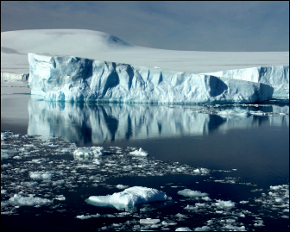Massive Antarctic Icebergs Heading To New Zealand

More than 100 icebergs are drifting toward New Zealand’s southern coast in a rare phenomenon that has only been recorded once before since 1931.
The icebergs are thought to have broken off the Ross Ice Shelf between 2000 and 2006, in an event that spawned similar icebergs off New Zealand’s coast in 2006, CNN reported.
Philip Duncan, Head Weather Analyst of the New Zealand-based Weather Watch Center, told CNN that icebergs that size drifting that far north are “pretty significant.”
Questions remain about what caused the icebergs to break off from an Antarctic ice shelf in the first place, and what has allowed them to travel so far north. Some theorize that a cold spell in Antarctica caused more ice than usual several years ago and that the outer regions of that ice snap off each summer, Duncan said.
“It may be we’ve just seen a particular weather pattern repeat itself over the past few years … or it may be something bigger. But I wouldn’t put it down to global warming just yet,” he said.
The largest of the icebergs is up to two kilometers long and 500 meters wide and stands 50 meters above sea level, making it about a third of a kilometer thick, according to New Zealand’s National Institute of Water and Atmospheric Research (NIWA). That would cover an area the size of 100 rugby fields.
The icebergs will probably last between six to eight weeks before melting away in the warmer Southern Ocean waters, NIWA estimated. In the meantime, Maritime New Zealand has issued an alert to shipping in the area, which is home to fishing fleets, cruise ships and cargo freighters. Only 10 percent of icebergs are visible above the water level, making them a hazard to ships.
Sources: CNN, National Institute of Water and Atmospheric Research






Leave a Reply
Want to join the discussion?Feel free to contribute!